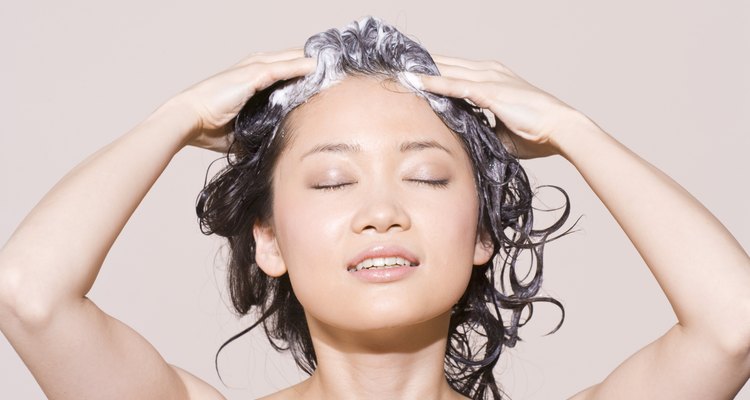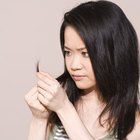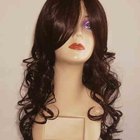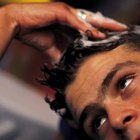
Jupiterimages/Pixland/Getty Images
Over time, all the gels, lotions, pomades and other gunk you put in your hair to keep it looking fine start to build up and look like something less than fine. When your hair starts to feel sticky and to look limp and lifeless, you know it's time for a clarifying treatment to rinse the hair clear of all those impurities. Two common clarifying methods, a baking soda rinse and clarifying shampoo, each have pros and cons.
Baking Soda
Baking soda is a naturally occurring chemical compound. It cleans — quite well — by very gently abrading your scalp and hair; this abrasion, however, can be irritating to your scalp. Additionally, baking soda is very alkaline, with a pH of 9, and quite out of balance with your hair and scalp, which have a pH of about 5. This pH imbalance can lead to the hair becoming dry and brittle. If you choose baking soda to cleanse, you'll want to thoroughly hydrate your hair with a moisturizer. On the plus side, baking soda is very affordable and readily available.
Doing a Baking Soda Rinse
If you choose to try a baking soda rinse, prepare a solution consisting of 1 tablespoon of baking soda to every cup of water. Mix your solution really well, until it is clear. Get your hair wet in the tub, sink or shower and then pour the solution through your hair, massaging into scalp and hair. Rub the solution through your hair as you would shampoo, and then rinse thoroughly. Be sure to follow with a moisturizing hair conditioner, oil or butter.
Clarifying Shampoo
Clarifying shampoos are more likely to be pH balanced to match your hair and scalp. They also, however, are likely to be packed with drying and potentially irritating chemicals such as sulfates. They can also contain silicones, which add nice shine and slip to hair, but which are not water-soluble and tend to build up on hair, essentially defeating the purpose of a clarifying shampoo. Clarifying shampoos can be pricey, too.
Other Options
If you can't decide between a baking soda rinse and a clarifying shampoo, you might instead choose another option altogether. For example, you might use a shampoo with a gentler cleansing sulfate -- such as sodium cocoyl glycinate instead of sodium lauryl sulfate, suggests NaturallyCurly.com. Or you can opt to use haircare products that contain only water-soluble ingredients -- no silicones -- and therefore rinse out easily and thoroughly with water and cause no buildup. This eliminates the need to clarify your hair.
Related Articles

How to Remove Hairspray From Wigs

How to Get Rid of Calcium Buildup in ...

How to Relax Damaged Hair

How to Manage Thick, Coarse ...

How to Remove Dandruff With Baking ...

How to Get Rid of Frizzy Straight Hair

How Often Do I Have to Wash Synthetic ...

How to Add Saw Palmetto to Your Shampoo

Can I Wet My Hair After a Perm?

How to Straighten Hair Without Blow ...

How to Restore Synthetic Wigs

Taming Over-Permed Hair

How to Unlock Dreads

What Can You Put on Curly Hair So it ...

How to Perm African American Hair

Alternatives to Wig Shampoo

How to Condition Hair After Using a ...

How to Keep My Hair From Getting Nappy

How to Remove Chlorine From Color ...

How to Wash Kanekalon
References
- International Journal of Cosmetic Science: Natural Skin Surface pH Is on Average Below 5, Which Is Beneficial for Its Resident Flora
- NaturallyCurly.com: Baking Soda for Hair
- FutureDerm: 3 Reasons Why Baking Soda and Apple Cider Vinegar Destroy Your Hair – And What to Use Instead
- NaturallyCurly.com: CurlySuzy Q&A: Which Sulfates Are Safer Than the Others?
Writer Bio
Gretchen Heber is an entrepreneur with more than 15 years of experience in online media. She has also worked with several daily newspapers across the United States, serving as a graphic designer, writer and editor.
Photo Credits
Jupiterimages/Pixland/Getty Images